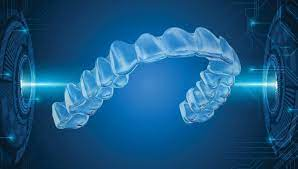Exploring AI in Orthodontics and Stream lining Your Orthodontic Workflow with AI
- Get link
- X
- Other Apps
if you are intersted in this article please follow for more readings
https://myorthodonticsblogg.blogspot.com/ 👈🏻
Exploring AI in Orthodontics
Artificial Intelligence (AI) is being used increasingly in orthodontics to automate various processes AI can be used to increase accuracy and efficiency in orthodontic care AI can help to improve the overall patient experience by making orthodontic treatments faster and more comfortable. AI and machine learning can be used to identify patterns and predict outcomes in orthodontic treatments.
To ensure the best results, collaboration between orthodontic professionals and technicians is important to achieve the most successful outcomes with AI. Artificial Intelligence (AI) can be used to analyze data to obtain the most favorable outcome when treating a malocclusion .Collaboration between orthodontic professionals and technicians is needed to achieve a positive symbiosis between AI and the clinic.
Making use of 3D printing technology can help simplify the process of creating orthodontic devices.There has been a rise in using AI and Machine Learning for diagnostics and treatment planning in orthodontics. AI can help orthodontists to gain an understanding of how to best treat a patient and provide more efficient treatments.
Artificial Intelligence (AI) offers a potential to assist practitioners in obtaining the most favorable outcome when treating a malocclusion.AI is being used to analyze vast amounts of data to generate sharper predictions. Research is being conducted to explore the possibilities of utopia related to AI-driven orthodontic care
Stream lining Your Orthodontic Workflow with AI
AI can reduce the time required for routine processes in orthodontics and allow orthodontists to focus on the critical aspects of providing quality patient care instead of tedious tasks. AI can review patient virtual monitoring scans, evaluate compliance, and create effective communication.
AI offers the potential to assist the practitioner to obtain the most favorable outcome when treating a malocclusion. AI can save time and improve patient care by simultaneously analyzing the variables present in a malocclusion.3D printing technology can be used to fabricate study models, clear aligner models, and surgical guides for inserting mini-implants.
For further reading and references :
- Get link
- X
- Other Apps



Comments
Post a Comment